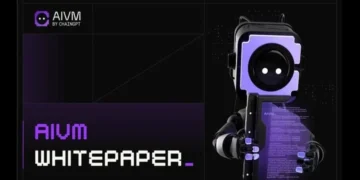In the dynamic landscape of artificial intelligence, a groundbreaking development has emerged from the prestigious Massachusetts Institute of Technology (MIT). Liquid AI, an MIT spinoff co-founded by robotics luminary Daniela Rus, is on a mission to revolutionize the field with its cutting-edge liquid neural network technology.
The Genesis: Liquid AI’s Impressive Funding
Liquid AI has recently raised an impressive $37.5 million in a two-stage seed round, attracting support from notable venture capitalists and organizations, including OSS Capital, PagsGroup, and Automattic. This substantial investment places the startup’s valuation at a remarkable $303 million post-money.
Meet the Minds Behind Liquid AI
The founding team of Liquid AI comprises visionary individuals, including Ramin Hasani as CEO, Mathias Lechner as CTO, and Alexander Amini as Chief Scientific Officer. With a blend of experience from Vanguard and extensive contributions to the invention of liquid neural networks at MIT, this team is poised to redefine the landscape of AI.
Demystifying Liquid Neural Networks
But what exactly are liquid neural networks? Unlike their conventional counterparts, liquid neural networks are characterized by their flexibility, drawing inspiration from the brains of roundworms. These networks, smaller and more efficient than traditional AI models, operate with significantly less compute power.
Size Matters: Liquid Neural Networks vs. Generative AI Models
Comparing a liquid neural network to a typical generative AI model unveils a striking difference. While models like GPT-3 boast billions of parameters and tens of thousands of neurons, liquid neural networks can accomplish tasks with as few as 20,000 parameters and fewer than 20 neurons. This efficiency translates to less computational power required for training and running the model.
Interpretable Intelligence: The Advantages of Small Size
The small size and straightforward architecture of liquid neural networks offer a unique advantage – interpretability. Understanding the function of each neuron becomes a more manageable task, paving the way for applications in various domains, including autonomous driving, text generation, and more.
Adaptability in Action: Liquid Neural Networks’ Unique Feature
One of the standout features of liquid neural networks is their ability to adapt parameters for success over time. Unlike traditional models that process isolated slices of data, liquid neural networks dynamically adjust the exchange of signals between neurons based on sequences of data. This adaptability allows them to navigate unexpected shifts in their surroundings, a quality evident in their impressive performance in tests.
Real-world Applications: From Drone Navigation to More
The real-world applications of liquid neural networks are vast. The Liquid AI team successfully trained a network for autonomous navigation, surpassing other models in decision-making and generalization to unseen scenarios. Drone search and rescue, wildlife monitoring, and delivery services are just a few examples of the potential applications, with the architecture suitable for analyzing any phenomena that fluctuate over time.
The Commercial Vision: Liquid AI’s Ambitious Goals
Liquid AI’s primary goal is clear – commercialization. Positioned as a competitor to foundation model companies building models like GPTs, the startup aims to develop best-in-class liquid foundation models. With the seed funding, they plan to continue refining the liquid neural network architecture and provide on-premises and private AI infrastructure for customers, fostering a platform for building customized models.
The Road Ahead: Liquid AI’s Growth and Impact
As of now, Liquid AI, with a 12-person team, anticipates expanding to 20 members by the early next year. Their commitment to accountability, safety, and efficiency in AI models positions them as a key player in the evolving landscape of artificial intelligence.
Conclusion
In conclusion, Liquid AI’s liquid neural networks present a paradigm shift in AI technology. Their adaptability, efficiency, and real-world applications signal a new era in robotics and artificial intelligence. As the startup advances on its journey, it holds the promise of unlocking the full potential of liquid neural networks.
FAQs
How do liquid neural networks differ from traditional AI models?
Liquid neural networks stand out for their flexibility, smaller size, and adaptability, requiring less compute power.
What real-world applications can benefit from liquid neural networks?
Applications include autonomous navigation, drone search and rescue, wildlife monitoring, and more, where adaptability is crucial.
How does Liquid AI plan to compete with existing foundation model companies?
Liquid AI aims to build best-in-class liquid foundation models beyond existing generative models like GPTs.
What advantages do liquid neural networks offer in terms of interpretability?
The smaller size and straightforward architecture make interpreting the function of each neuron more manageable.
Follow us on our social networks and keep up to date with everything that happens in the Metaverse!
Twitter Linkedin Facebook Telegram Instagram Google News Amazon Store











































